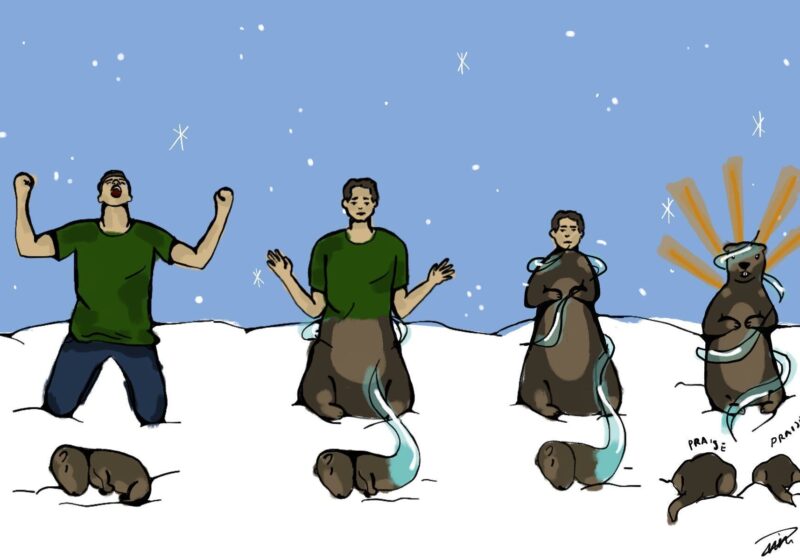Around midnight on Tuesday, Sept. 9, a raccoon bit an undergraduate student on the second floor balcony of Rush Rhees Library, according to UR’s Senior Sanitarian Peter Castronovo. Castronovo said that he and others who investigated the incident are still unsure whether the raccoon was rabid or not.
“Students were feeding the raccoons doughnuts,” Castronovo said.
A student attempted to call the raccoon over to him, similar to calling a dog, and the raccoon responded, Castronovo said.
“The student wanted the raccoon to lick his fingers, but the raccoon bit the student’s finger,” Castronovo said.
The raccoon was never caught, so Castronovo is uncertain whether or not the raccoon was, in fact, infected with rabies.
“By the signs of how it acted, there is more suspicion,” he said. “The fact that the raccoon walked up to the individual is atypical behavior and is one of the signs that an animal is rabid.”
This incident was so significant that Castronovo sent a “Wildlife Alert” to Director of Residential Life Logan Hazen on Sept. 15 to alert Resident Advisers and students of the dangers of coming into contact with animals.
If a person contracts rabies and does not seek treatment, that person will die, “no question about it,” Castronovo said.
He and others were alarmed by this incident because the student did not wash the wound or seek medical attention until his peers urged him to do so. One can contract rabies through contact with saliva or being bitten by an infected animal.
“In the first six months of 2003, there have been 174 confirmed cases of rabid raccoons in New York State, including one in the Rochester area in June. However, skunks, foxes, bats and even feral cats are known to carry and transmit rabies,” Castronovo wrote in his alert.
The usual signs of rabies include foaming at the mouth, acting unusually aggressive or unusually tame, biting itself and dragging the hind legs when walking, according to Castronovo.
“However, the animal may not be displaying any of these symptoms and could still have rabies. The only certain way to determine whether an animal has rabies is through laboratory testing,” Castronovo wrote. “Consequently, avoiding all wildlife is the prudent thing to do.”
To avoid such problems in the future, Castronovo offered this advice. “Don’t try to attract animals by feeding them or leaving food where animals can eat it,” he said. “Don’t leave trash outside residential buildings. Always maintain good sanitation so as not to attract animals.”
As Senior Sanitarian in UR’s Department of Environmental Health and Safety, Castronovo deals with pest control, sanitation and wildlife on campus. “The River Campus maintains a wildlife population similar to that of a park. We have regular problems with squirrels, raccoons, woodchucks and skunks,” he said. “Consequently, our goal is not to eliminate the animal population. The real problem is when people feed them or when garbage is left out.”
If you or someone you know has been in contact with a wild and possibly rabid animal, Castronovo recommends to immediately wash the wound thoroughly with soap and warm water and to contact University Health Service at x5-2662. If you see an animal that exhibits any or all of the aforementioned signs of rabies, contact the Pest Control Unit of Environmental Health & Safety at x5-3241.
Yunis can be reached at tyunis@campustimes.org.




